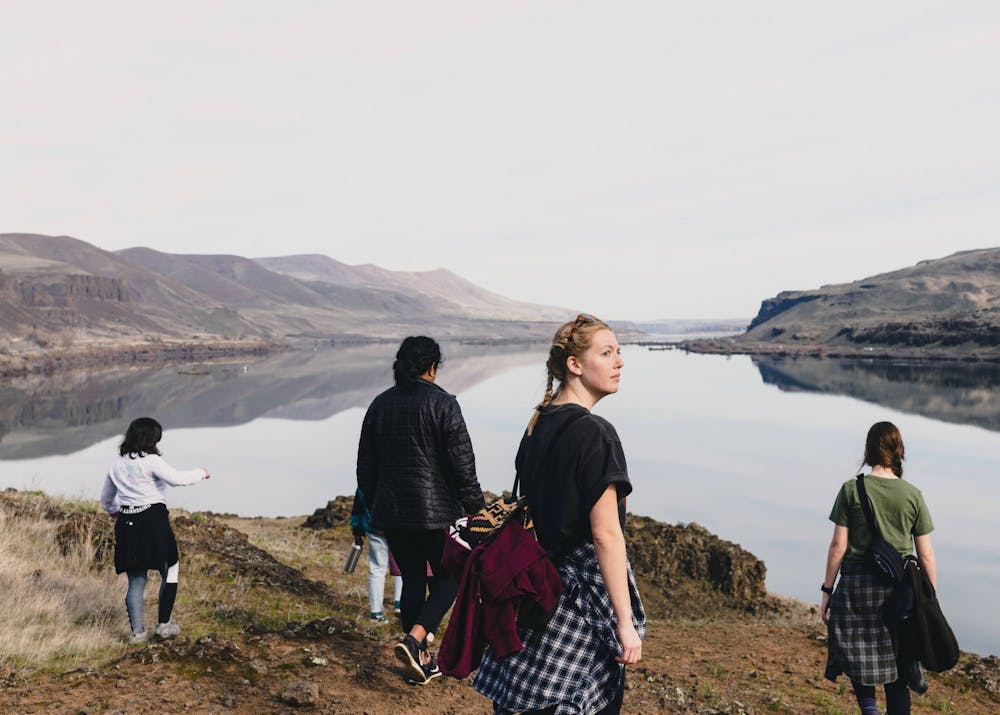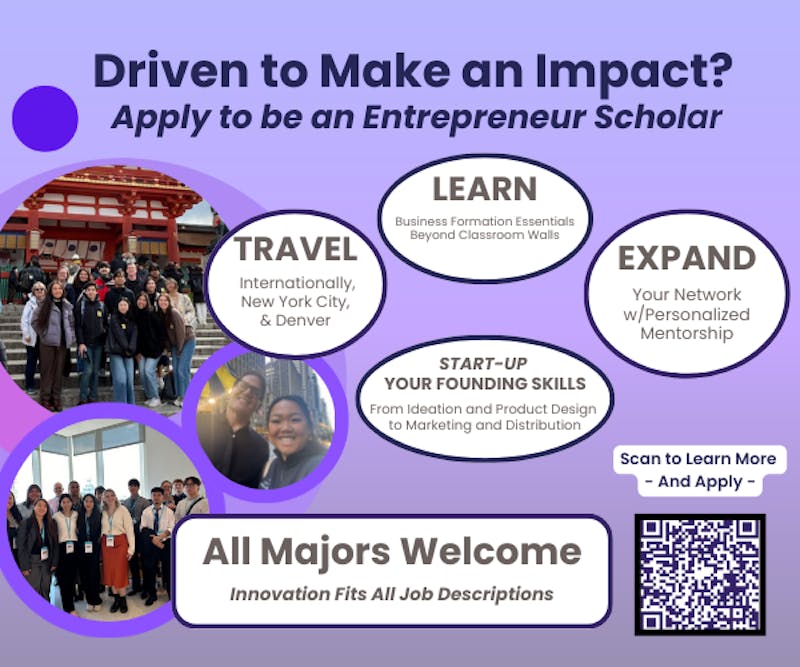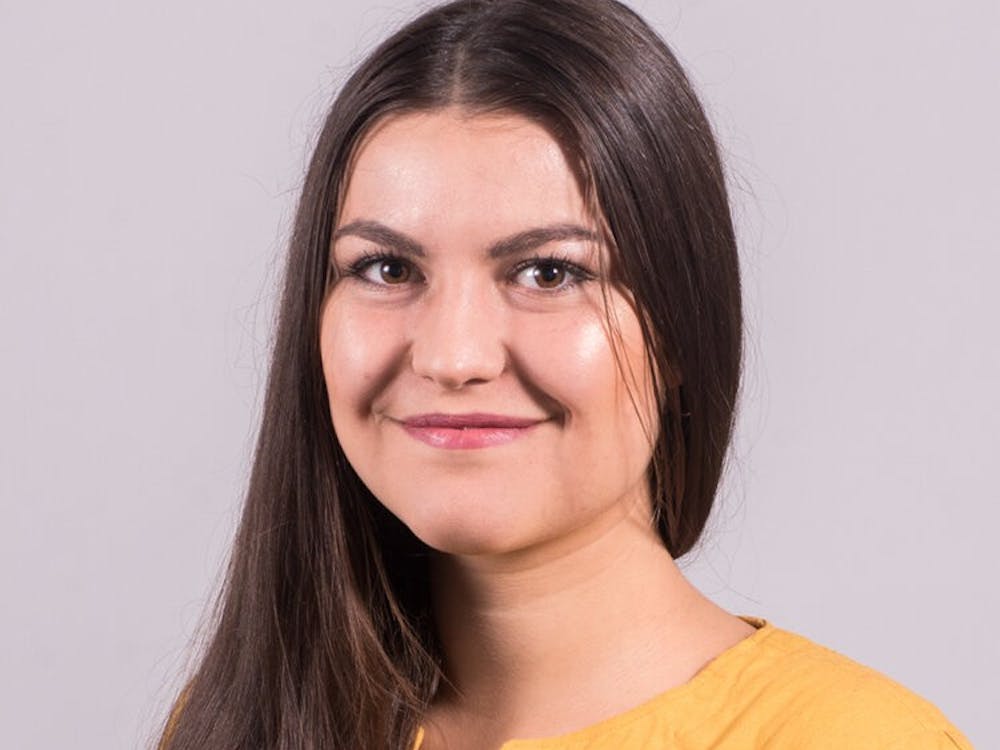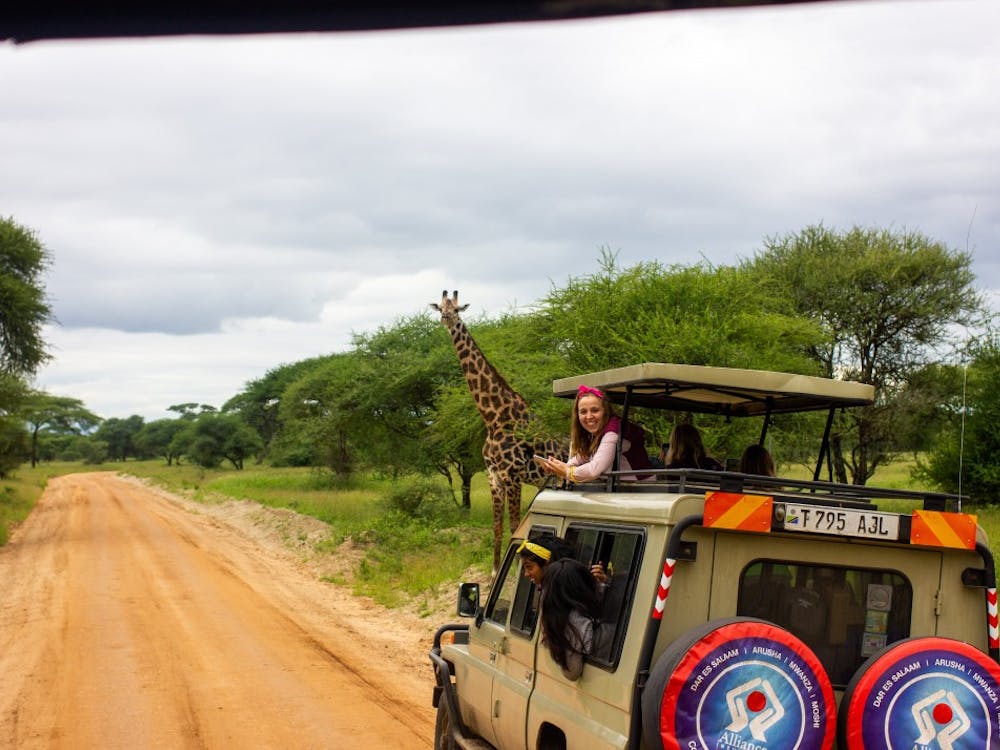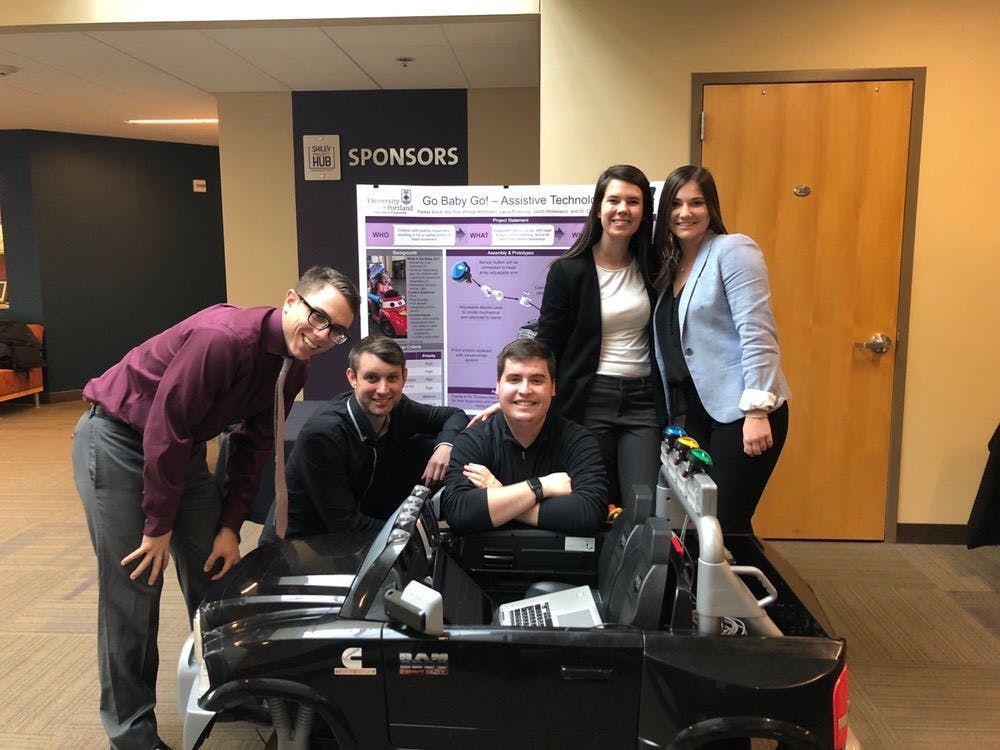This reflection is an account of photographer Molly Lowney’s experience at the Environmental Justice Immersion during spring break (March 1 to March 6) of 2020.
Acrid smoke pierced the skyline of the Gorge. Panicked townspeople rushed to evacuate the local elementary school and find safe refuge. The groundwater was contaminated. Old-growth trees burned and lost forever.
I opened my eyes and looked at the seemingly normal train depot in Mosier, Oregon. I tried to imagine the scene of destruction caused by the oil train derailment in 2016. The pebbles on the ground started dancing and our group looked down the tracks. The rumble of an approaching train never sounded so evil.
From our own campus in Portland to the tribal lands of the Columbia Gorge, the environmental justice immersion over spring break revealed the unjust systemic issues boiling beneath the surface of our everyday lives. We started the immersion in our own backyard, traveling from urban North Portland to the wild expanse of the Columbia River Gorge.
During our three hour tour with Portland Harbor Community Coalition, we spent time in Montgomery Park, the Zenith Oil Terminal, St. Johns and River Campus. I learned that from the Broadway Bridge to Sauvie Island, the Willamette River is a designated superfund site polluted with heavy metals and synthetic chemicals. The Zenith Energy Terminal is directly across the river from UP. Oil trains at risk of explosion converge there everyday, running along routes through St. Johns and the Columbia River Gorge.
When the tour ended, our group sat to rest on our own River Campus and we looked down at the cement blocks under our feet that dotted the riverbank. The blocks are a result of “capping,” a way to contain the toxicity in the ground below.

From Sunday through Friday of spring break, we met with local organizations in Portland and the Gorge who taught us the importance of community collaboration and listening to diverse voices. We met with the Asian Pacific American Network of Oregon (APANO) and took a walking tour of Portland’s Jade District. APANO’s goal is to unite Asians and Pacific Islanders to advance community equity and empower them through organizing and advocacy.
Our tour guide Simeon pointed out cracked sidewalks and dangerous infrastructure. One of APANO’s initiatives is to implement pedestrian-friendly, green infrastructure that also includes more access to public transit.
We also met with Verde, Columbia Riverkeeper and Oregon Physicians for Social Responsibility. They taught us the power of diverse voices in sparking positive change. Recently, many of these groups collaborated to gain approval for the Portland Clean Energy Fund. In essence, this fund collects taxes and reinvests in clean energy projects aimed to benefit marginalized communities and create new jobs within communities of color.
In the middle of the week, we took a detour to Salem and met with Renew Oregon at the capitol building. We learned how the cap and invest bill up for a vote within the state legislature is stalled due to the refusal of state senators to come in and vote. The bill would require polluting companies to purchase allowances to emit certain levels of carbon dioxide. The money collected from allowances would be invested into climate change adaptation projects. State Senator Fredricks came to speak with our group about the legislation and gave us advice about public policy advocacy.
The landscape changed when we drove into the Columbia Gorge. Our focus shifted from building urban resilience and fighting environmental racism to the struggle against big oil, the railroad industry and the erasure of indigenous peoples. The Columbia River Inter-Tribal Fish Commission (CRITFC) took us around the Gorge for a tour of tribal fishing sites and a local longhouse. We learned that recognizing indigenous tribes as self-determined, sovereign nations is essential to having a respectful, collaborative relationship with them.
Jaime, the executive director of CRITFC, spoke to us about the sacredness of salmon and how their populations have drastically fallen over the past years. Jaime taught us that in his Nez Perce tradition, salmon was one of the “first foods” that sustained humanity at the beginning of human life. When we met with local tribal elders in the longhouse, we were further reminded that our relationship with the land is sacred.
Mosier, Oregon, was our next location. In 2016, an oil train derailment and explosion caused lasting environmental damage to the small town’s local ecosystem and groundwater supply. Mosier Mayor Arlene Burns took us on a tour of the town and talked about the restoration process and negotiations with Union Pacific Railroad. Our day ended with a hike recommended to us by Friends of the Columbia Gorge at Horsethief Butte. That night, we had dessert with local climate activists from Hood River High School.
On the last day of our immersion, we returned to campus and took part in a workshop on active hope. My main takeaway from the workshop was this: Hope is a force greater than ourselves. It’s something you practice that’s grounded in community partnerships and stems from first acknowledging pain. Hope isn’t something you have — it’s something you practice.
The groups we met throughout the week were eager to share their work with us. I learned that in order to create positive environmental change, we need to listen intentionally to diverse voices. Environmental justice is inherently intersectional. We can’t create a just, earth-conscious society without everyone having a seat at the table. I always thought of activism on a global scale, but this immersion reminded me that local change is the foundation of societal change.
I learned that in order to connect with people, you have to connect with their hearts. Storytelling is the greatest power we have in building solidarity. Mayor Burns told us that when you yell, people close their ears, but when you whisper, they open them. The true message comes in the whispers. This immersion showed me that if we can whisper our story and build a deep, empathetic respect for one another, we can heal our planet.
Molly Lowney is a photographer for The Beacon. She can be reached at lowney21@up.edu.



